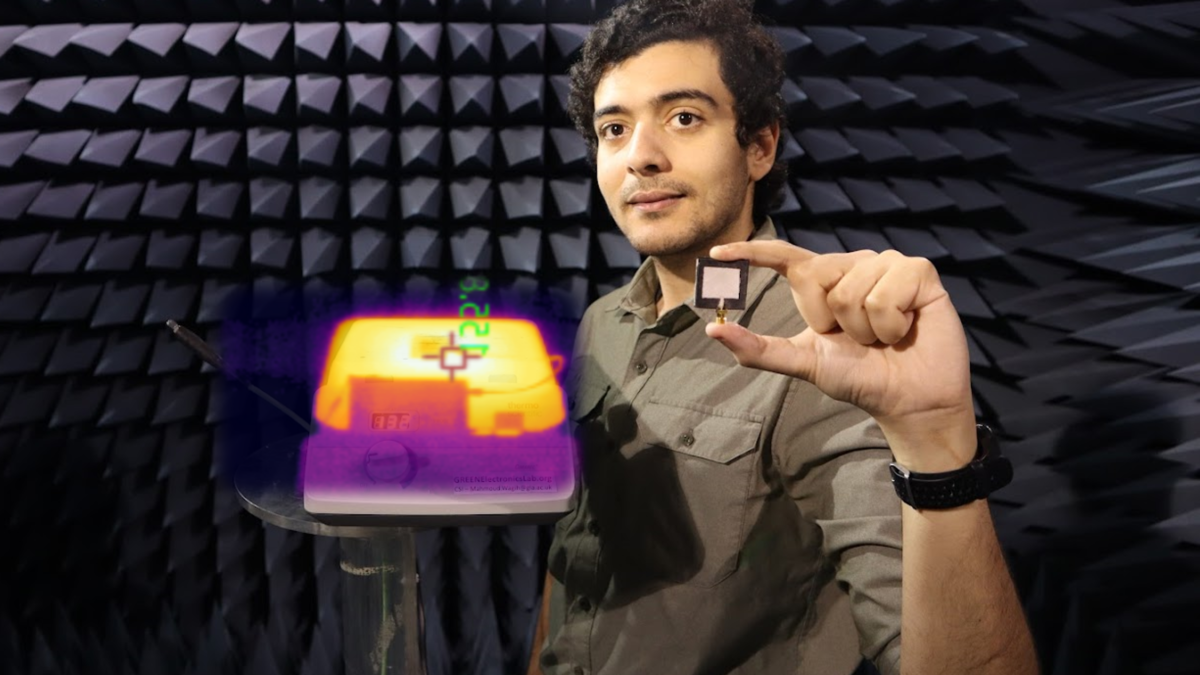University of Glasgow researchers are leading the charge on the next generation of ‘smart skin’ sensors, which are set to massively improve the measurement of temperature.
Engineers have devised a way to produce a material made of soft, flexible carbon fibres and silicon rubber to create sensors free from conventional battery power or onboard processing.
Instead, the sensor will operate from electromagnetic waves, absorbing and reflecting radio-frequency (RF) signals varies with atmospheric heat or cold.
This would enable the sensing of temperature across a much greater range than other comparable devices. It can also withstand thousands of cycles of bending and stretching without losing its sensitivity to temperature.
Dr Mahmoud Wagih, UK IC research fellow and lecturer at the University of Glasgow, led the study.
He said: “Sensors are the main interface between the analogue world and smart devices. To communicate real-world changes in measurements like temperature or humidity to wireless smart devices, those measurements first need to be digitised.
“We designed a simple soft composite using common silicone and carbon fibres, which can be easily moulded into any shape. These skin-like substrates could be used to design antennas over large areas, which can then radiate signals that are highly sensitive to temperature changes.
“Many researchers have used RF and microwave devices to measure liquid formulations, temperature, humidity, and other physical and chemical parameters. However, this level of sensitivity has not been demonstrated before.”
Temperature sensors are found in almost all electronic devices, and the global market for the technology is currently valued between $5-8bn.
Typical temperature sensors, known as thermistors, work by changing resistance in response to changes in temperature. However, they are usually only capable of measuring over narrow ranges of temperature variation, meaning temperature sensors often rely on an array of different thermistors to cover a wide sensing range.
The new soft, flexible temperature sensor, developed by a team led by researchers from the University of Glasgow, is capable of reading temperatures across a record-breaking range from 30°C to more than 200°C.
This could make help make future wireless sensors cheaper and more sustainable, as fewer devices will now be required to cover the same temperature sensing range.
In a paper published in the journal Nature Communications, the researchers show how used a 3D printer to mould the flexible material and integrated it into components like antennas, RFID labels, and resonators. Then they tested its ability to absorb radio-frequency (RF) radiation at different temperatures ranging up to 300°C.
Researchers from the Universities of Glasgow, Southampton and Loughborough contributed to the paper, along with colleagues from PragmatIC Semiconductor Ltd in Cambridge.
The research was supported by the UK Engineering and Physical Sciences Research Council (EPSRC), the Royal Society, and the Royal Academy of Engineering and Office of the Chief Science Adviser for National Security.




